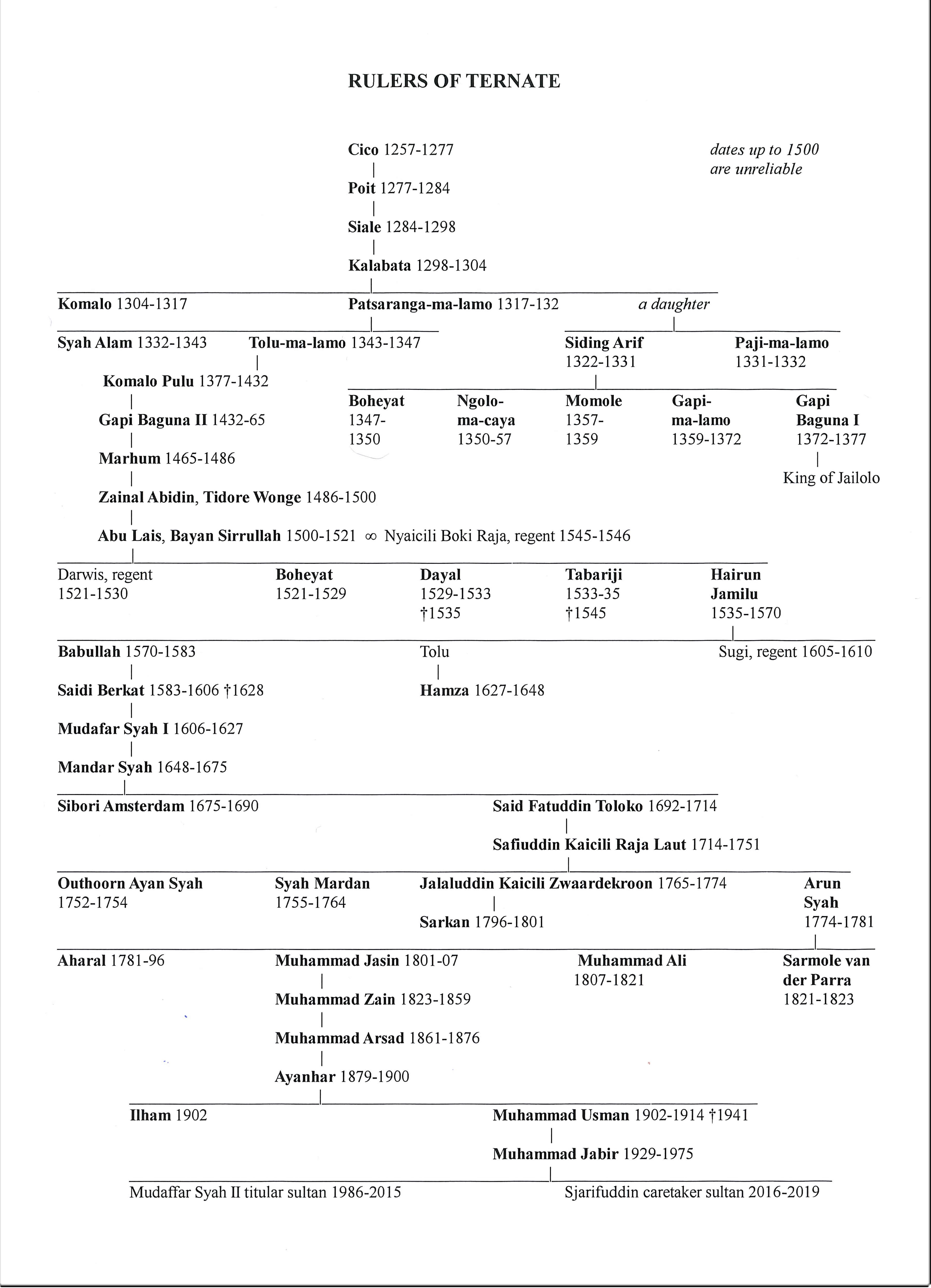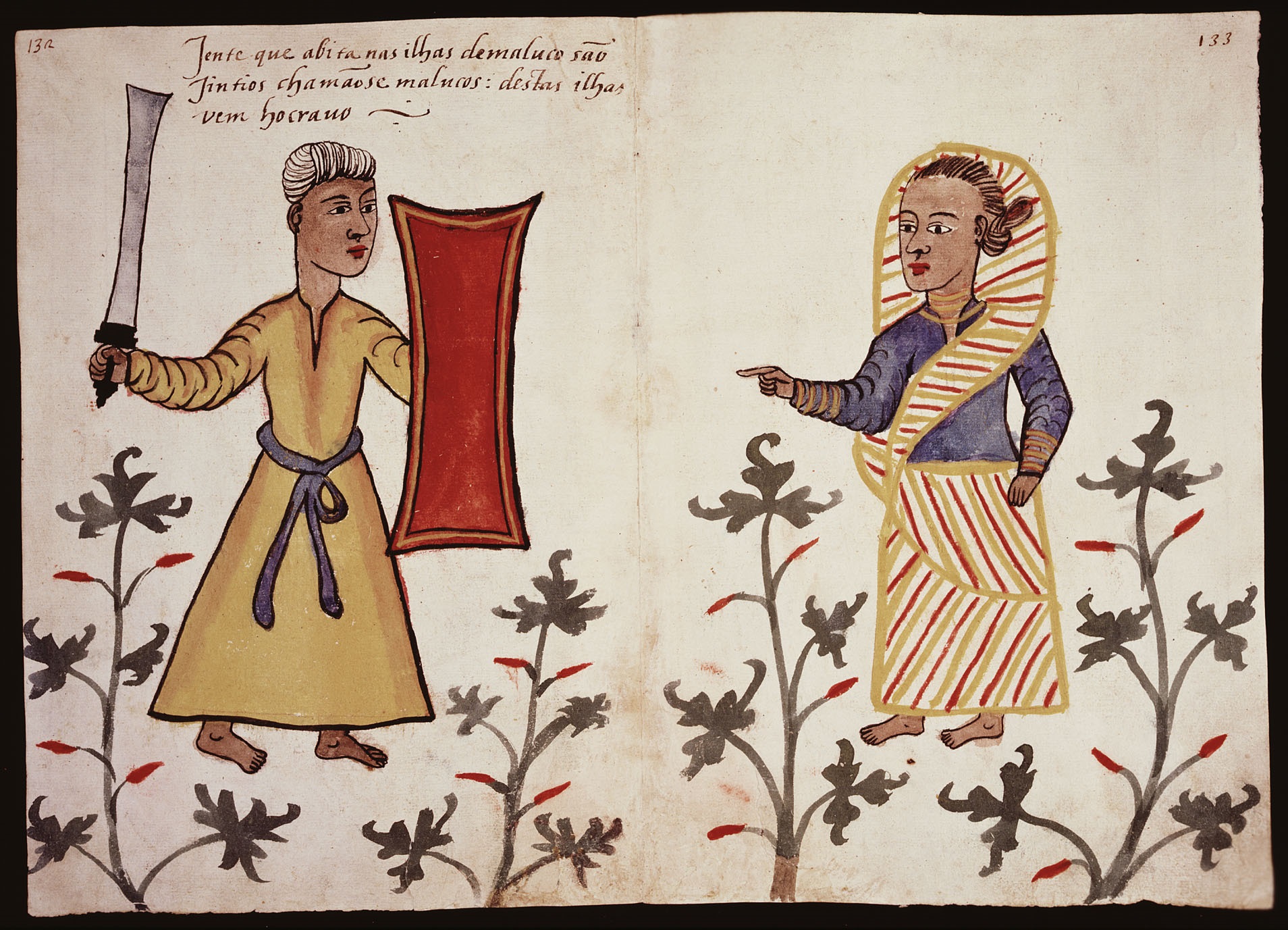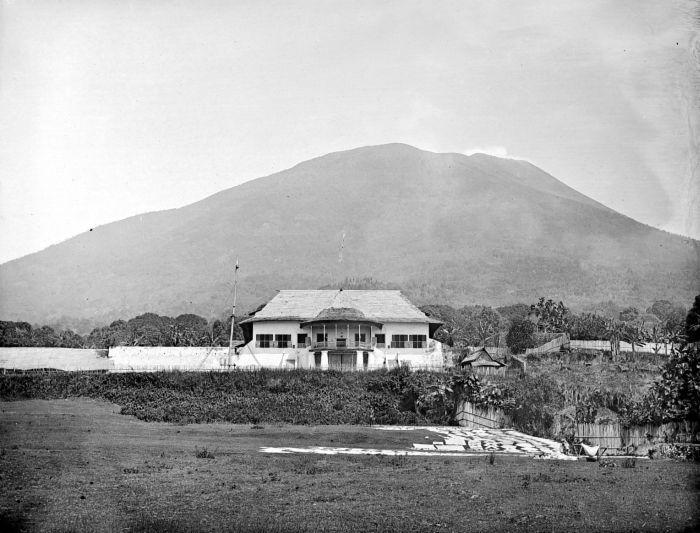|
Bacan
The Bacan Islands, formerly also known as the Bachans, Bachians, and Batchians, are a group of islands in the Moluccas in Indonesia. They are mountainous and forested, lying south of Ternate and southwest of Halmahera. The islands are administered by the South Halmahera Regency of North Maluku Province. They formerly constituted the Sultanate of Bacan. Bacan ( nl, Batjan), formerly also known as Bachian or Batchian, is the group's largest island. The second and third-largest islands are Kasiruta and Mandioli. Bacan Island in 2020 included about 82,387 people, of which about 10,000 live in the capital Labuha; it is subdivided into seven districts. Kasiruta and Mandioli each have over 10,000 inhabitants, and each is subdivided into two districts. A fourth island, Bacan Lomang, forms a twelfth district within the group. There are dozens of smaller islands in the group, which had a total population of 84,075 at the 2010 Census, but by the 2020 Census had risen to 111,517. The offic ... [...More Info...] [...Related Items...] OR: [Wikipedia] [Google] [Baidu] |
Sultanate Of Bacan
The Sultanate of Bacan (كسلطانن باچن) was a state in Maluku Islands, present-day Indonesia that arose with the expansion of the spice trade in late medieval times. It mainly consisted of the Bacan Islands (Bacan, Kasiruta, Mandioli, etc.) but had periodical influence in Ceram and the Papuan Islands. It fell under the colonial influence of Portugal in the 16th century and the Dutch East India Company (VOC) after 1609. Bacan was one of the four kingdoms of Maluku (Maloko Kië Raha) together with Ternate, Tidore and Jailolo, but tended to be overshadowed by Ternate. After the independence of Indonesia in 1949, the governing functions of the sultan were gradually replaced by a modern administrative structure. However, the sultanate has been revived as a cultural entity in present times. Early history According to a legend known from the 16th century, the kings of Bacan, the Papuan Islands, Banggai and Buton descended from a set of snake's eggs which had been found among ... [...More Info...] [...Related Items...] OR: [Wikipedia] [Google] [Baidu] |
South Halmahera Regency
South Halmahera Regency ( id, Kabupaten Halmahera Selatan) is a regency of North Maluku Province, Indonesia. It lies partly on Halmahera Island and partly on smaller islands to the west and south of Halmahera. It covers a land area of 8,779.320 km2, and at the 2010 Census it had a population of 198,911 people, while the 2020 Census showed that this had risen to 248,395 and the official estimate in mid 2021 was 251,690. The capital lies at the town of Labuha on Bacan Island. Islands Besides the southern part of Halmahera Island, the regency includes a number of archipelagoes and islands. These comprise: * Obi Islands, including Obira (main), Bisa, Obilatu and other small islands, comprising in all five ''kecamatan'' with 51,510 people in mid 2021. * Bacan Islands, including: ** Bacan Island itself, comprising 7 ''kecamatan'' with 84,011 people (in mid 2021) ** Bacan Lomang Island, comprising 1 ''kecamatan'' with 7,735 people ** Mandioli, comprising 2 ''kecamatan'' with 10,843 ... [...More Info...] [...Related Items...] OR: [Wikipedia] [Google] [Baidu] |
North Maluku
North Maluku ( id, Maluku Utara) is a province of Indonesia. It covers the northern part of the Maluku Islands, bordering the Pacific Ocean to the north, the Halmahera Sea to the east, the Molucca Sea to the west, and the Seram Sea to the south. The provincial capital is Sofifi on the largest island of Halmahera, while the largest city is the island city of Ternate. The population of North Maluku was 1,038,087 in the 2010 census,Central Bureau of Statistics: ''Census 2010'' , retrieved 17 January 2011 making it one of the least-populous provinces in Indonesia, but by the 2020 Census the population had risen to 1,282,937, and the official estimate as at mid 2021 was 1,299,177. North Maluku was originally the centre of the four largest Islamic sultanates in the eastern Indonesian archi ... [...More Info...] [...Related Items...] OR: [Wikipedia] [Google] [Baidu] |
Sultan Of Ternate
This is a list of rulers of Maluku from proto-historical times until the present. The four sultanates of Ternate, Tidore, Sultanate of Jailolo, Jailolo and Bacan Islands, Bacan were considered descendants of a legendary figure called Jafar Sadik and formed a ritual quadripartition. Drawing wealth from the spice production and trade with other parts of Asia, Ternate and Tidore lorded over extensive realms which stretched from Sulawesi to West Papua (region), Papua, while Jailolo and Bacan merely had local significance. They fell under Portugal, Portuguese or Spain, Spanish influence in the sixteenth century, superseded by Netherlands, Dutch impact in the seventeenth century. The sultanates were subordinated to the Dutch colonial state until 1942 when the Japanese occupied Indonesia. After the outbreak of the Indonesian revolution they belonged to the Dutch-approved quasi-state East Indonesia from 1946 to 1950 when they were incorporated in the unitary Indonesian state. Sultans of Ba ... [...More Info...] [...Related Items...] OR: [Wikipedia] [Google] [Baidu] |
Sultanate Of Jailolo
The Sultanate of Jailolo (كسلطانن جايلولو) was a premodern state in Maluku, modern Indonesia that emerged with the increasing trade in cloves in the Middle Ages. Also spelt Gilolo, it was one of the four kingdoms of Maluku together with Ternate, Tidore, and Bacan, having its center at a bay on the west side of Halmahera. Jailolo existed as an independent kingdom until 1551 and had separate rulers for periods after that date. A revivalist Raja Jailolo movement made for much social and political unrest in Maluku in the 19th century. In modern times the sultanate has been revived as a symbolic entity. Origins Jailolo was a component in the politico-ritual quadripartition of northern Maluku, ''Maloko Kië Raha'' or the Four Mountains of Maluku. Its king was known as Jika ma-kolano, Ruler of the Bay, highlighting the Jailolo Bay as the major port in Halmahera. It is locally believed that the kingdom encompassed the entire island or at least the major part. However, in hi ... [...More Info...] [...Related Items...] OR: [Wikipedia] [Google] [Baidu] |
Hairun
Sultan Hairun Jamilu (c. 1522 – 28 February 1570) was the 6th Muslim ruler of Ternate in Maluku, reigning from 1535 to 1570. During his long reign, he had a shifting relation to the Portuguese who had a stronghold in Ternate and tried to dominate the spice trade in the region. This ended with his assassination at the hands of a Portuguese soldier in 1570. Early life Portuguese seafarers from Melaka had appeared in the waters of eastern Indonesia since 1512. The trade in spices and forest products made it vital for the early colonizers to secure bases in the Maluku Islands (Moluccas) and control the enormously lucrative commerce. A fort was built on Ternate in 1522–1523 with the approval of the local Sultan, who hoped for military assistance to expand his own power. At the time Ternate was the most powerful of the four sultanates of North Maluku, the other being Tidore, Bacan and Jailolo. However, the Portuguese captains soon began to dominate the royal court while the garrison ... [...More Info...] [...Related Items...] OR: [Wikipedia] [Google] [Baidu] |
Saidi Berkat
Sultan Saidi Berkat (c. 1563 – 1628) was the eighth Sultan of Ternate in the Maluku Islands. He succeeded to the extensive east Indonesian realm built up by his father Sultan Babullah, reigning from 1583 to 1606. The Spanish, who colonized the Philippines and had interests in Maluku, repeatedly tried to subdue Ternate, but were unsuccessful in their early attempts. Saidi's reign coincides with the arrival of the Dutch in Maluku, which indirectly caused his deposal and exile through a Spanish invasion. Taking over the spice empire Saidi Berkat, also called Said Din Berkat Syah, was, according to Dutch information, born in c. 1563 in the time of his grandfather Sultan Hairun. His mother Bega was a co-wife of Prince Baab, later Sultan Babullah. After the assassination of Hairun at the hands of the Portuguese in 1570, Babullah took over and successfully fought the European intruders. Portuguese power became restricted to a few forts in Tidore and Ambon and they lost control over ... [...More Info...] [...Related Items...] OR: [Wikipedia] [Google] [Baidu] |
Labuha
Labuha is a small port town on the eastern Indonesian island of Pulau Bacan. It is the capital of the South Halmahera Regency, part of the province of North Maluku, and also the administrative centre of the Bacan District within the regency. It has a population at the 2020 Census of 13,546 (including the adjoining urban communes of Amasing Kota, Amasing Kota Barat and Amasing Kota Utara).Biro Pusat Statistik, Jakarta, 2021. The town is served by Labuha Airport. Climate Labuha has a tropical rainforest climate A tropical rainforest climate, humid tropical climate or equatorial climate is a tropical climate sub-type usually found within 10 to 15 degrees latitude of the equator. There are some other areas at higher latitudes, such as the coast of southea ... (Af) with moderate to heavy rainfall year-round. References Populated places in North Maluku Regency seats of North Maluku {{Maluku-geo-stub ... [...More Info...] [...Related Items...] OR: [Wikipedia] [Google] [Baidu] |
Ternate
Ternate is a city in the Indonesian province of North Maluku and an island in the Maluku Islands. It was the ''de facto'' provincial capital of North Maluku before Sofifi on the nearby coast of Halmahera became the capital in 2010. It is off the west coast of Halmahera, and is composed of eight islands: Ternate, the biggest and main island of the city, and Moti, Hiri, Tifure, Mayau, Makka, Mano, and Gurida. In total, the city has a land area of 162.17 square kilometres and had a total population of 185,705 according to the 2010 census, and 205,001 according to the 2020 census, with a density of 1,264 people per square kilometre. It is the biggest and most densely populated city in the province, is the economic, cultural, and education center of North Maluku, and acts as a hub to neighbouring regions. It was the capital of the Sultanate of Ternate in the 15th and 16th centuries, and fought against the Sultanate of Tidore over control of the spice trade in the Moluccas before becomin ... [...More Info...] [...Related Items...] OR: [Wikipedia] [Google] [Baidu] |
Sultanate Of Ternate
The Sultanate of Ternate (Jawi alphabet: كسلطانن ترنتاي), previously also known as the Kingdom of Gapi is one of the oldest Muslim kingdoms in Indonesia besides Tidore, Jailolo, and Bacan. The Ternate kingdom was established by Momole Cico, the first leader of Ternate, with the title Baab Mashur Malamo, traditionally in 1257. It reached its Golden Age during the reign of Sultan Baabullah (1570–1583) and encompassed most of the eastern part of Indonesia and a part of southern Philippines. Ternate was a major producer of cloves and a regional power from the 15th to 17th centuries. The dynasty founded by Baab Mashur Malamo continues to the present, as does the Sultanate itself, although it no longer holds any political power. History Pre-colonial period The sultanate was originally named the Kingdom of Gapi, but later changed the name to be based on that of its capital, Ternate. Originally there were four villages in Ternate and led by clan leaders called Mom ... [...More Info...] [...Related Items...] OR: [Wikipedia] [Google] [Baidu] |
Sultanate Of Tidore
The Sultanate of Tidore (Indonesian: كسلطانن تيدوري, ''Kesultanan Tidore'', sometimes ''Kerajaan Tidore'') was a sultanate in Southeast Asia, centered on Tidore in the Maluku Islands (presently in North Maluku Province). It was also known as Duko, its ruler carrying the title Kië ma-kolano (Ruler of the Mountain). Tidore was a rival of the Sultanate of Ternate for control of the spice trade, and had an important historical role as binding the archipelagic civilizations of Indonesia to the Papuan world. According to extant historical records, in particular the genealogies of the kings of Ternate and Tidore, the inaugural Tidorese king was Sahjati or Muhammad Naqil whose enthronement is dated 1081 in local tradition. However, the accuracy of the tradition that Tidore emerged as a polity as early as the 11th century is considered debatable. Islam was only made the official state religion in the late 15th century through the ninth King of Tidore, Sultan Jamaluddin. He wa ... [...More Info...] [...Related Items...] OR: [Wikipedia] [Google] [Baidu] |
Moluccas
The Maluku Islands (; Indonesian: ''Kepulauan Maluku'') or the Moluccas () are an archipelago in the east of Indonesia. Tectonically they are located on the Halmahera Plate within the Molucca Sea Collision Zone. Geographically they are located east of Sulawesi, west of New Guinea, and north and east of Timor. Lying within Wallacea (mostly east of the biogeographical Weber Line), the Maluku Islands have been considered as a geographical and cultural intersection of Asia and Oceania. The islands were known as the Spice Islands because of the nutmeg, mace and cloves that were exclusively found there, the presence of which sparked colonial interest from Europe in the sixteenth century. The Maluku Islands formed a single province from Indonesian independence until 1999, when it was split into two provinces. A new province, North Maluku, incorporates the area between Morotai and Sula, with the arc of islands from Buru and Seram to Wetar remaining within the existing Maluku Province. ... [...More Info...] [...Related Items...] OR: [Wikipedia] [Google] [Baidu] |









